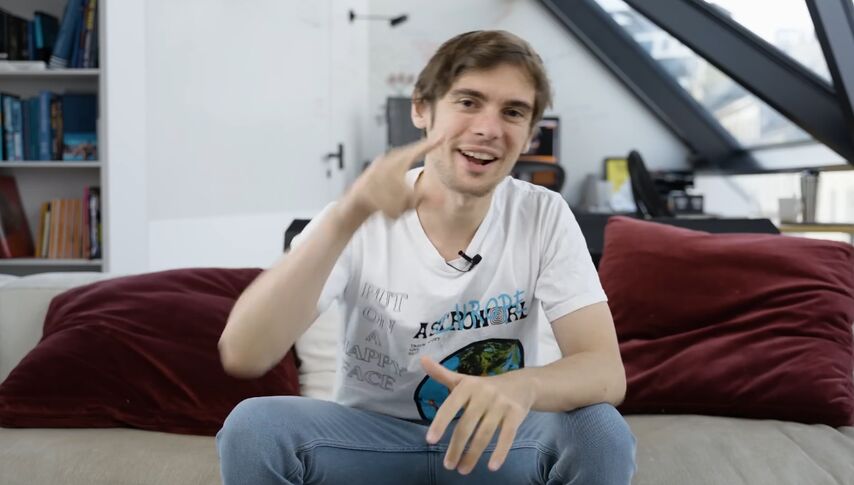I played a $210,000 tournament and won $2,100,000 in it and I want to share my impressions of my performance. It was a private tournament of the Triton series, and the field was formed by invitation only – an unusual, rare, but rather interesting format. Businessmen could participate in the event, and each had the right to invite one professional player. Whom to consider as a businessman and who as a professional was decided by the organizers, and in most cases they were able to sort out this issue. Maybe a couple of people from among the businessmen could be described as professionals, but oh well.
The number of entries (each participant could make one additional entry) exceeded 100, I think. The atmosphere was great – the organizers threw a party before the start of the tournament, held an exciting seat draw, and there were many other high stakes tournaments in the series itself. I had a few deep runs, I was in good shape and I was eager to play.

On the first day, businessmen played against businessmen, and professionals played against professionals. The streams merged on the second day. This format provided interesting dynamics and, it seems to me, interested many businessmen. When half of the participants in such a tournament are amateurs, this is something special. Of course, many of them are experienced players who have taken part in high roller tournaments before, but still, for a professional of my level, it brings me great happiness to play in such a tournament. I thank the organizers of the Triton series, they did an incredible job and held the festival to an incredible standard. Venue, dealers, managers – everything was great.
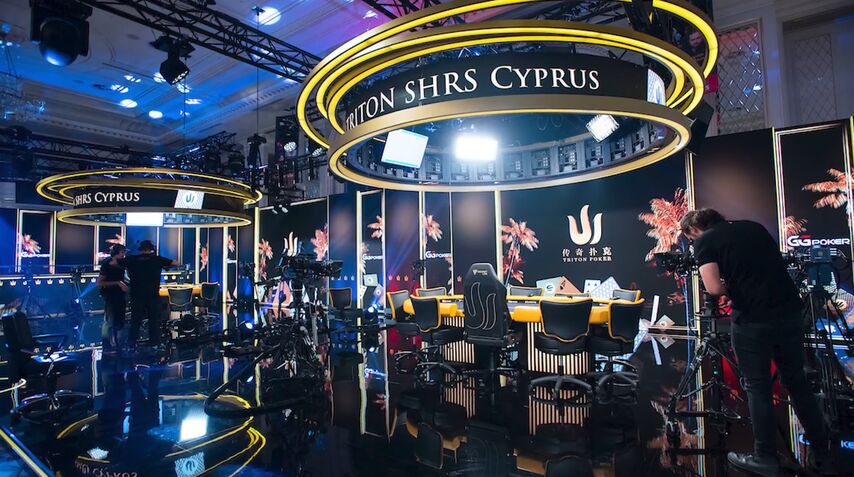
I finished the first day with a little less than two starting stacks. Nothing crazy happened, there were no wild hands. The biggest pot I won was against Michael Addamo – in a 3-bet pot on a king high board, I had . The real fun began on the second day, when businessmen were merged with professionals.
I got very lucky in a big hand against Nick Petrangelo. An interesting situation arose: a weaker player opened on the button, I 3-bet in the small blind, and Nick cold 4 bet from the BB. Of course, I am playing wider than usual in this dynamic, and you need to understand how much wider he wants to 4-bet me and how many 4-bet folds he has. I decided to 5bet all-in with KQo and he called with and I hit a queen.
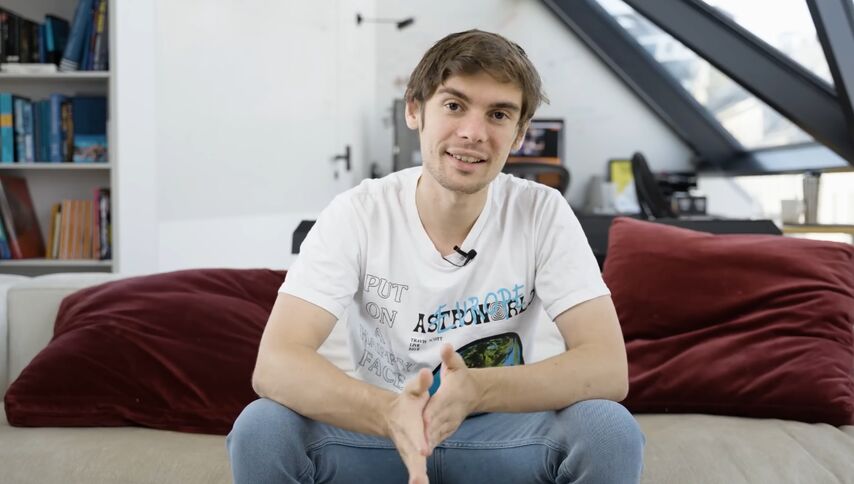
This pot turned out to be very important as it gave me a big stack that got me to the bubble. In very high buy-in tournaments, as the money bubble approaches, participants begin to think more about money than usual. I can't say that they are horrified by the fear of being eliminated, but the money is tangible for everyone: it's only two buy-ins, but in reality it is $400,000, so no one wants to make a mistake. At this stage, I managed to increase my stack from 4 million chips to 7 million. Out of 55 hands, I played 50 and won almost all of them. There were six people at the table, and I opened almost every hand.
Then came the first turning point. I hope you saw the stream, and if not, I advise you to get acquainted with it, the tournament turned out to be very fun thanks to businessmen and unusual dynamics. Among the participants, a crypto investor from France, Karl Chappe-Gatien, stood out, he also had a lot of chips, and he did not hesitate to use them. An absolutely fearless player who was difficult to beat.
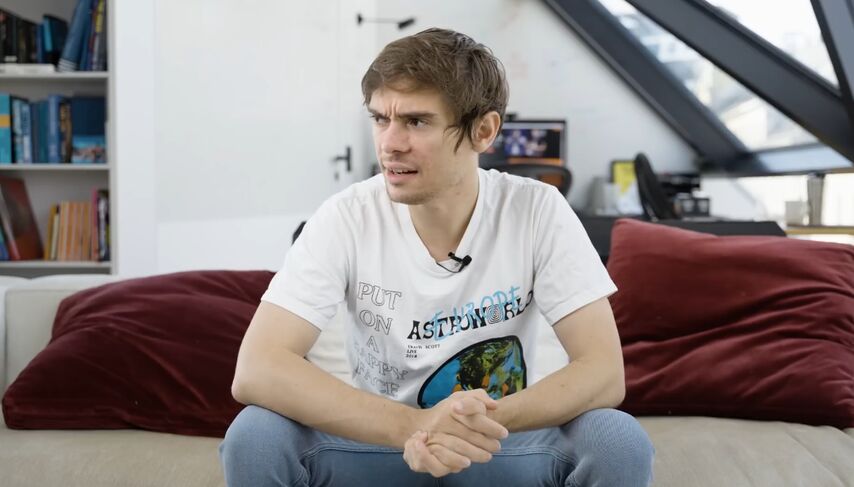
He had 4.5 million chips, maybe even 5 million, I had about 7 million. When there were 13 or 14 people left in the tournament, on the third day in which Linus and I became big chip leaders, Karl opened from the hijack, got called from the button and I put in a big squeeze from the small blind with .
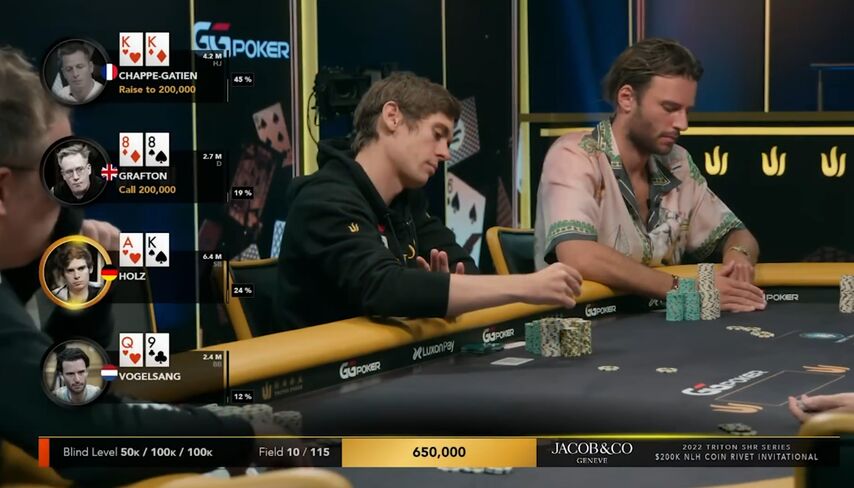
He shoved kings and held after I called. A dead cooler that left me with a medium stack. It was impossible to fold for me, he showed aggression over a very wide range of hands, difficult folds against such players are not a consideration. Yes, sometimes they have kings – such is poker.
After such a turn in momentum, it is important to immediately switch to playing a medium stack, which requires a completely different strategy. I think I did well with it.
At the final table, the dynamics were also extremely interesting, and I enjoyed the game immensely. The organizers did their best, made a beautiful ceremony of introducing the participants, when we came out one by one under the spotlight. Personally, I was very inspired and literally eager to fight. I felt that I was in good shape, I really wanted to play as well as possible. Amazing feeling!
I played my game and I think it was very good. Maybe two or three hands can be classified as controversial or marginal, but the decisions were close enough.
Why do I love tournament poker? Whatever your experience, there are always new situations that you are not ready for. Tournament chip leader Karl showed that he enjoys gambling. When he raises and someone goes all-in, Karl is ready to call with hands that the pros would rather fold with. This significantly increases the variance and completely reshapes the strategy. If the chip leader raises with QTs, you should quickly build up a new Nash equilibrium in your mind – how best to handle this situation given ICM. This is a whole puzzle, and the time to solve it is limited. This is why I love MTTs.
One of the difficult situations arose against Ebony Kenny. I give her credit! She played the biggest tournament in her life and did not try to hide her excitement, but at the table she radiated very positive energy and made a good impression on me.
She was in the small blind in the hand... Yes, we played with a time bank – 20 seconds preflop. So, she bets all-in, and I have KTo in the BB. I know this is a solid call against any pro. However, I noticed that she shoved very quickly: she looked at her cards, thought a little and bet all-in, but she clearly made the decision right away, and this noticeably affects her range. Due to the speed of decision-making, some of the strongest hands and many of the weaker marginal hands can be discounted. Now I have to decide in 20 seconds where this line is? Will she confidently push ? Or maybe only ? If so, then my KTo needs to hit the muck. How tight should I call her all-in?
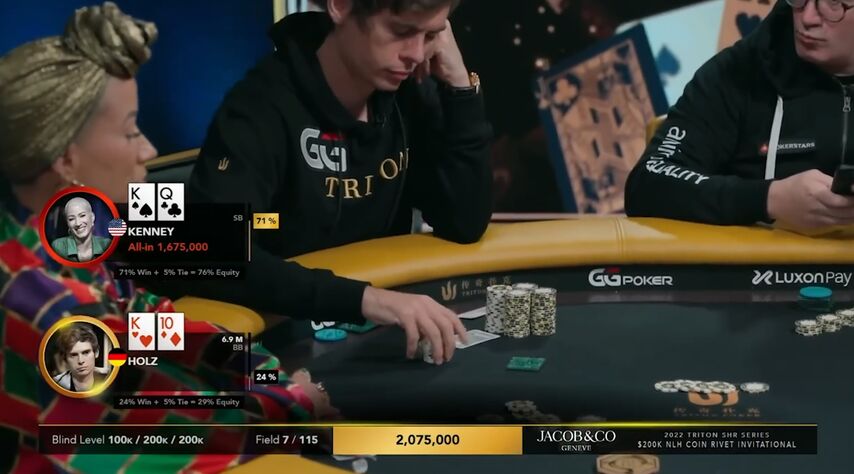
I decided to call, but I think objectively it was a mistake. In the biggest tournament of her life, the fast all-in threshold should be much higher than in GTO. She will only shove hands that she is comfortable shoving with. I think the call boundary for me was KJo, and KTo should have been folded. In general, all this, in my opinion, is very interesting – the basic strategy, reads, adjustments, an attempt to take into account all the additional information...
Then there was a very tense hand against Karl. We were all very nervous playing against him because we knew there was no fold equity and every all in is a huge spike in variance: we'll usually be ahead, but it's not that hard to lose an all-in as a favorite in poker!
There were four people left when I was dealt AJs in the big blind. Sam Grafton, who had a lot of chips, raised and Karl 3-bet on the button. I had such a stack that against my all-in, Karl had to call with all the hands he 3-bet with. However, he didn't 3-bet random hands. He called – yes, with anything, and if he just called, I would gladly call all-in. But Karl took 3-bets more seriously, especially against Sam, who had a bigger stack than him. J4o will never be there. Outwardly, he also looked like he had good cards.
I used two timebank tokens to make this decision. I wanted to get into Sam's mind: his continuation range is destroying me. Understanding what was in Karl's head was more difficult because we didn't play much together and I didn't have time to study how he behaves with different types of hands. Maybe he has ATs, but he just really likes this hand. In general, I did not attach much importance to the reads against him.
Sam is different. I wanted to see if he was losing interest in the hand as I thought. If I manage to understand that he does not want to continue, this will greatly affect my decision. And vice versa, of course – if he is impatient, I fold this hand, even realizing that in itself is pretty useful.
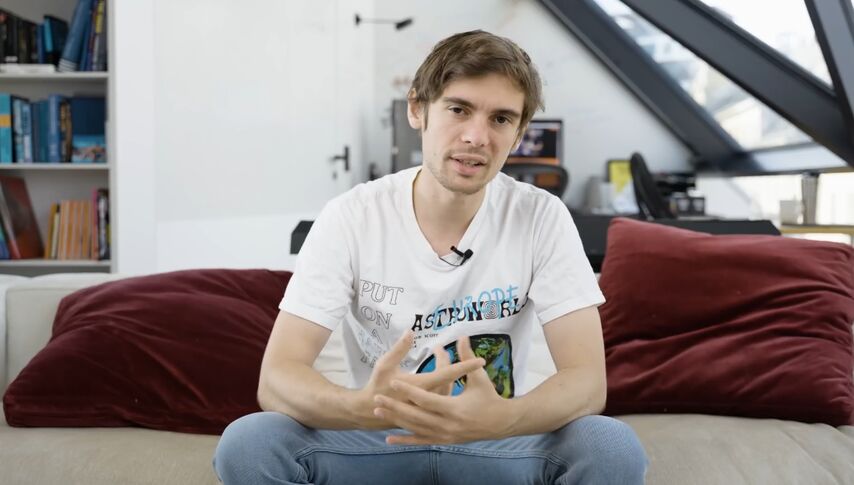
After 20-25 seconds, I felt that Sam was not interested in continuing in the hand, after which my all-in became quite simple.
Karl had ATs. We showed down. I hit a jack on the flop, but on the river he made a backdoor flush.
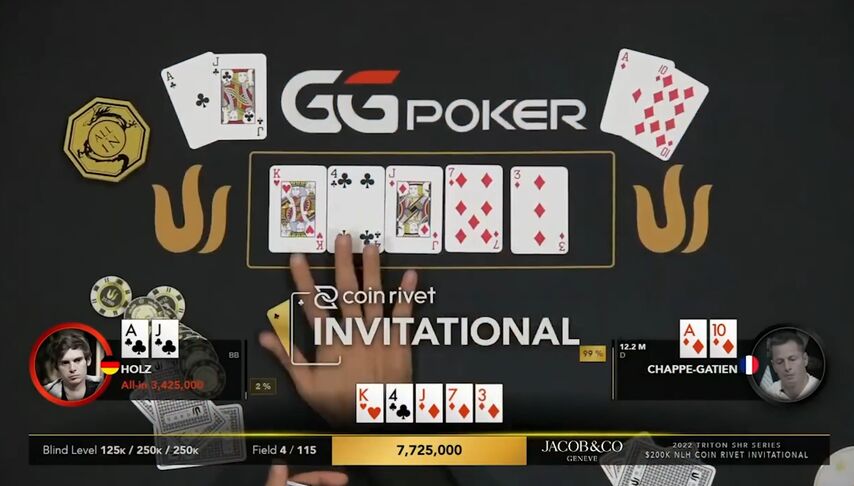
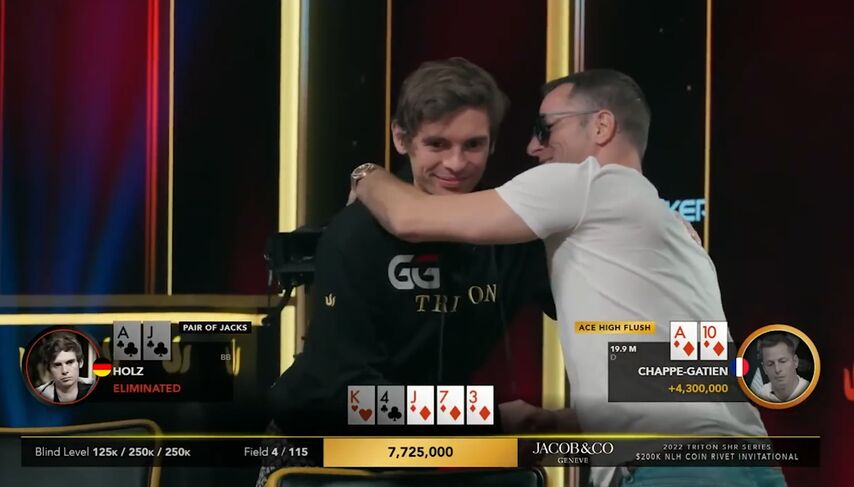
It was painful to lose this all-in, but not because of the money at all: I just wanted so badly to keep playing, to solve these puzzles one after another. I enjoyed working at maximum speed. It would be great to get to heads-up and fight there! What can you do – I did everything that I could, and even got it in ahead in the last hand :)
I was invited to the tournament by David Einhorn, for which I say many thanks to him. We had several training sessions together, which I enjoyed a lot. He is an amazing student. Unfortunately, he did not run good, and he busted out during the second day.
That's how this tournament turned out for me. Okay, next time the first prize won't get away!
